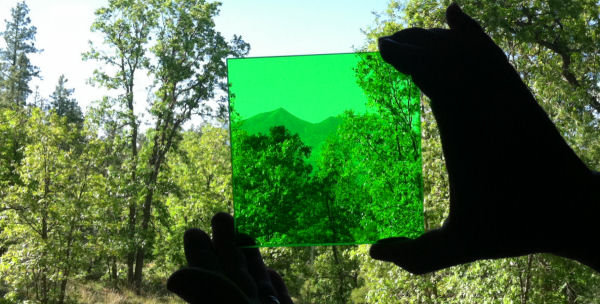
LMI: Specifications

- FOV: 12.5' x 12.5'
- Pixel scale: 0.12"/pixel unbinned; 0.24"/pixel binned 2x2
- CCD e2v CCD231:
- 6144x6160 15µm pixels (92.16 mm x 92.40 mm)
- Deep depletion and fringe suppression allows good red sensitivity without fringing.
- Special 4-layer AR coating for excellent response from near-UV to far-red
- Spec sheet for delivered grade 1 device: here.
- RC Corrector:
- Two element design optimized to produce good images and suppress ghosting
to <0.05% of the night sky, permitting surface photometry down to µ=30 mag/arcsec^2 in B and V.
- Fused silica lenses to provide excellent UV transmission to a radius of 15 arcminute to allow for GWAVES guider and wave-front sensing
- We required that the shutter
allows uniform exposures (<1%) at all exposure
times down to 0.1 seconds or shorter, facilitating the use of bright twilight
for flats and for observing bright standards.
In point of fact the Bonn shutter is much better even than that, allowing
millisec exposures that appear quite uniform. The timing of the shutter is
accurate to a 0.5% or better at 0.2 seconds.
- Filters:
- Spaces for 18 filters at any one time (dual 10-filter wheel)
- We currently have a commplement of 15 full-size filters.
- Users can provide their own filters
- We went with 4.75-inch x 4.75inch filters in order to make sure
there was no vignetting over the full FOV. Beam size is 101 mm diameter
at location of the further away filter wheel.
- Expect good quality optical filters to cost about $5-6K/each in these
sizes.
- Running the CCD controller at a conservative 0.6 Mpx/sec will
allow rapid time-series observations as well as facilitate twilight flats through multiple filters:
- 1 amplifier read out in 73 seconds unbinned
- 1 amplifier read out in 24 seconds binned 2x2 (default mode)
- 1 amplifier read out in 10 seconds binned 4x4
- 4 amplifiers read out <5 sec binned 2x2
- Software interface based on NASA42 Cam's LOUI/LOIS:
- Simple and reliable
- Automatic focusing script for small ROI
- Real-time display of images
- Header key words campatible with major astronomical software reduction
tools, such as IRAF.
- Absolute encoding of filter and shutter positions removes need to "home" moving parts in the rare event that a restart is needed.
These results made use of the Discovery Channel Telescope at Lowell Observatory. Lowell is a private, non-profit institution dedicated to astrophysical research and public appreciation of astronomy and operates the DCT in partnership with Boston University, Northern Arizona University, the University of Maryland and the University of Toledo. Partial support of the DCT was provided by Discovery Communications. LMI was funded by the National Science Foundation via grant AST-1005313.


